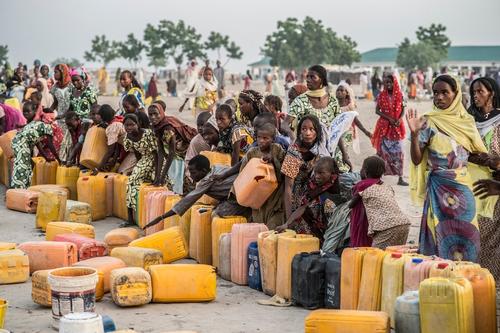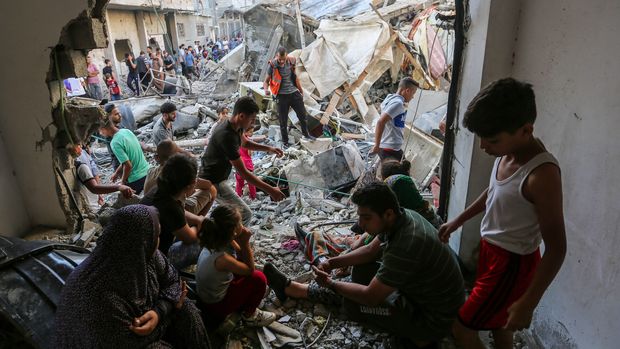Urgent Action Needed: Addressing Critical Humanitarian Issues Gripping the Globe

What are the primary humanitarian emergencies globally today? Despite the overshadowing impact of the COVID-19 crisis, which has worsened existing issues, various humanitarian crises persist, ranging from armed conflicts to environmental disasters exacerbated by climate change. Here’s a recap of some of the most severe crises gripping the world.
While the Sustainable Development Goals (SDGs) advocate for leaving no one behind, humanitarian crises continue to ensnare millions in unsustainable and vulnerable conditions. In December 2019, the United Nations Office for the Coordination of Humanitarian Affairs (OCHA) warned that a record 168 million people worldwide would require humanitarian aid in 2020 due to prolonged conflicts, faltering economies, and extreme climate events. Little did anyone anticipate that these challenges would soon be compounded by the COVID-19 pandemic.
The global havoc wrought by the coronavirus quickly exacerbated existing humanitarian crises. OCHA estimates that approximately 235 million people worldwide will depend on humanitarian aid and protection in 2021, marking a 41% increase in just one year. Despite collaborative efforts and the launch of the United Nations (UN) COVID-19 Global Humanitarian Response Plan, Antonio Guterres, the UN Secretary-General, emphasizes the importance of not overlooking other humanitarian emergencies. He warns that diverting funds from addressing these needs could foster environments conducive to the spread of diseases like cholera, measles, and meningitis, exacerbate child malnutrition, and bolster violent extremist movements.

WHAT CONSTITUTES A HUMANITARIAN ISSUES CRISIS
A humanitarian crisis denotes a widespread emergency affecting an entire community or region, characterized by elevated mortality or malnutrition rates, disease outbreaks, and health emergencies. It often entails a dearth of clean water, food security, sanitation, and shelter. Typically, such crises stem from pre-existing vulnerabilities in areas plagued by persistent inequality, poverty, and inadequate basic services, exacerbated by triggers such as political upheavals like armed conflicts, coups, ethnic or religious persecution, and environmental catastrophes such as tsunamis, earthquakes, and typhoons.
As situations deteriorate and countries struggle to cope, humanitarian aid becomes indispensable to address the needs of vulnerable populations. This assistance may manifest as food aid, medical care, and infrastructure rebuilding, among other forms of support. Reducing casualties is pivotal to resolving the crisis and initiating a period of developmental cooperation.

CAUSES AND IMPACTS OF HUMANITARIAN ISSUES CRISES
Various factors can precipitate a humanitarian crisis. Here are some key contributors:
Political Turmoil
Armed conflicts and civil wars not only result in famine and fatalities but also trigger refugee crises. According to the United Nations Refugee Agency (UNHCR), nearly 80 million people worldwide were displaced by conflict and persecution by the end of 2019. Examples include crises in Yemen, Somalia, South Sudan, and northern Nigeria.
Environmental Factors
Climate change, though receiving comparatively less attention, significantly exacerbates humanitarian crises. The UN reports that 90% of disasters stem from climate change, with the number of such incidents doubling over the past two decades. Floods, droughts, heatwaves, and severe storms claim lives and trigger shortages, compelling mass migrations in search of refuge (climate displacement). Notable examples include the 2004 Indian Ocean tsunami, the 2010 Haiti earthquake, the 2017 Somali drought, and the consecutive impacts of Cyclones Eta and Iota on Honduras in 2020.
Healthcare Crises
Epidemics can precipitate profound humanitarian crises, especially in regions lacking access to basic healthcare. Diseases like Ebola, malaria, HIV, and cholera pose significant challenges to humanitarian aid efforts, claiming numerous lives annually.

The repercussions of humanitarian crises on affected societies are dire, including:
Population Displacement
Fleeing armed conflict, famine, and environmental disasters, many people become internally displaced or seek refuge in other countries. According to UNHCR, 80% of displaced individuals reside in countries grappling with severe food insecurity and malnutrition.
Food Insecurity and Malnutrition
Wars and climate disasters devastate farmlands and infrastructure, hindering food distribution. Climate change further compounds agricultural challenges by altering rainfall patterns and exacerbating droughts and pest infestations.
Lack of Essential Services
Schools, hospitals, and their personnel, despite being protected by international law, often come under attack. The UN advocates for safeguarding these vital services in conflict zones to prevent indiscriminate attacks, such as those witnessed in Afghanistan and Libya during the COVID-19 crisis.

PRESENT-DAY MAJOR HUMANITARIAN ISSUES CRISES
While humanitarian crises afflict numerous countries, several demand heightened international attention:
Yemen
A five-year civil war, compounded by obstruction of humanitarian aid, has plunged one of the world’s poorest nations into dire conditions, with hunger and cholera rampant. Approximately 81% of Yemen’s population relies on aid for survival, and the conflict has displaced four million people.
Syria
A brutal civil war since 2011, involving international actors, has sparked the world’s largest refugee crisis. What began as a conflict between President Bashar al-Assad’s regime and opposition factions escalated with the emergence of the Islamic State, further exacerbating the humanitarian plight.
Afghanistan
Beset by armed groups like the Taliban and ISIS, Afghanistan faces both violence and a severe drought, resulting in over 200,000 displacements.
Haiti
After a devastating 2010 earthquake, Haiti has endured recurring emergencies, including cyclones and a cholera epidemic, amid political instability and violence.
Central African Republic: Since 2013, sectarian violence and power struggles have plunged the country into an overlooked armed conflict, marked by genocide and human rights violations.

ADDRESSING HUMANITARIAN ISSUES CRISES: HUMANITARIAN AID
Humanitarian aid encompasses actions aimed at assisting, protecting, and defending individuals affected by disasters. It aims to preserve human life, alleviate suffering, ensure decent conditions, and provide access to essential services like food, medical care, water, and shelter. Moreover, humanitarian aid endeavors to uphold basic rights, including human rights advocacy, documentation, political pressure, and support provision.
In 2019, the United States, via private donations, was the largest contributor to humanitarian aid, followed by Germany and the United Kingdom. Noteworthy recipients included Yemen, Syria, and Iraq. Institutional actors like the United Nations, through agencies like OCHA and CERF, play pivotal roles in responding to humanitarian crises, alongside organizations such as UNDP, UNHCR, UNICEF, and WFP.




